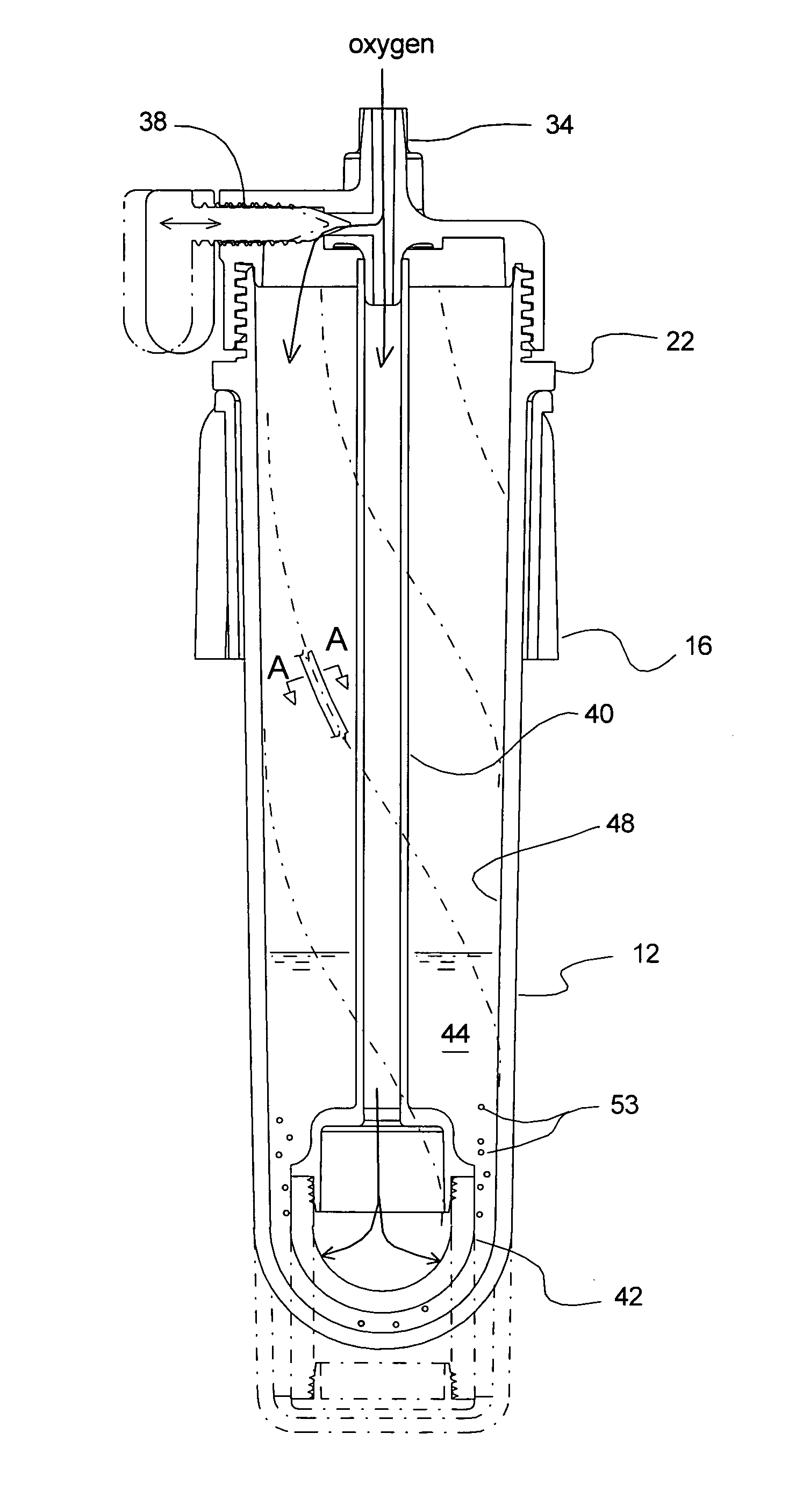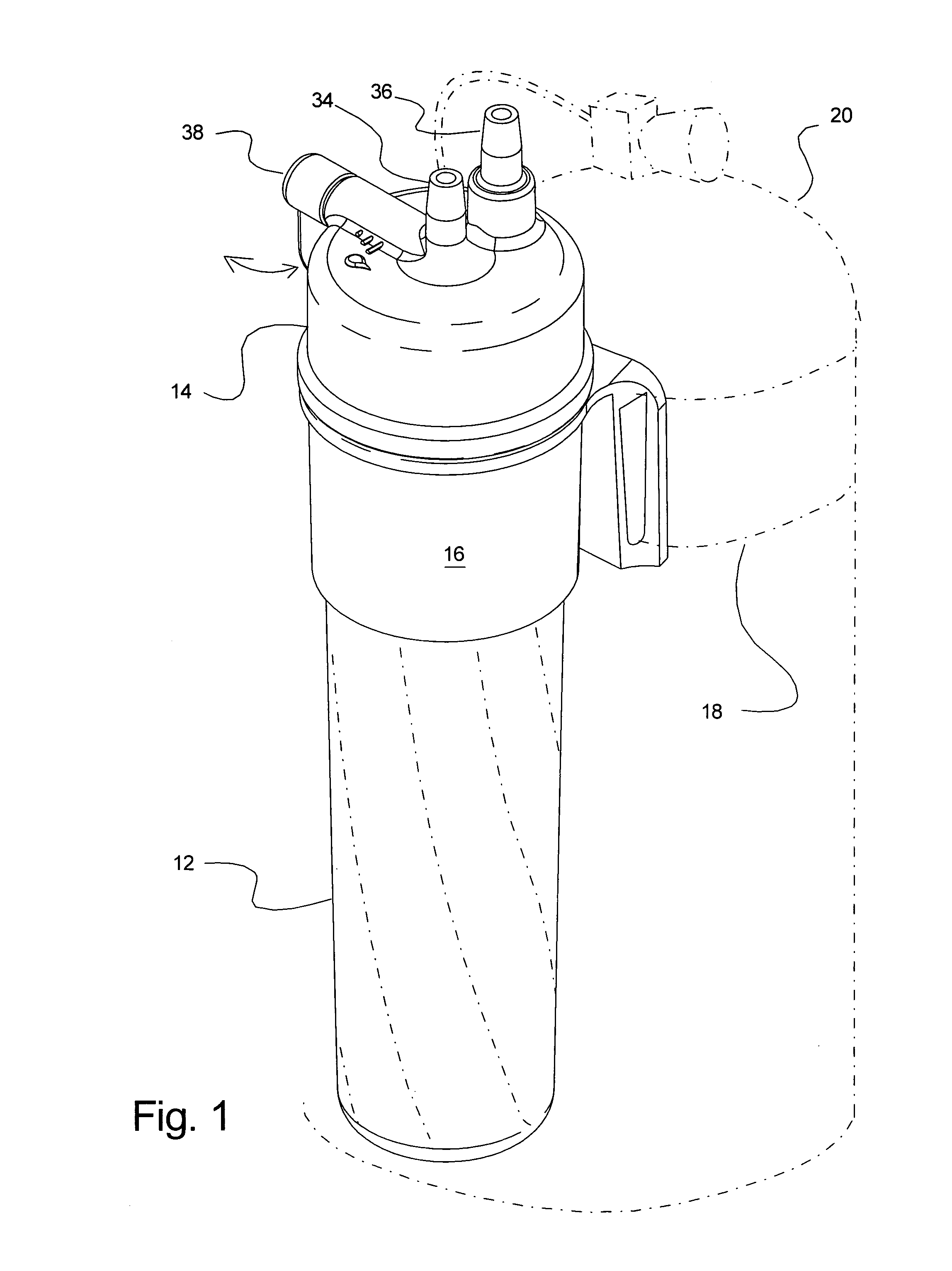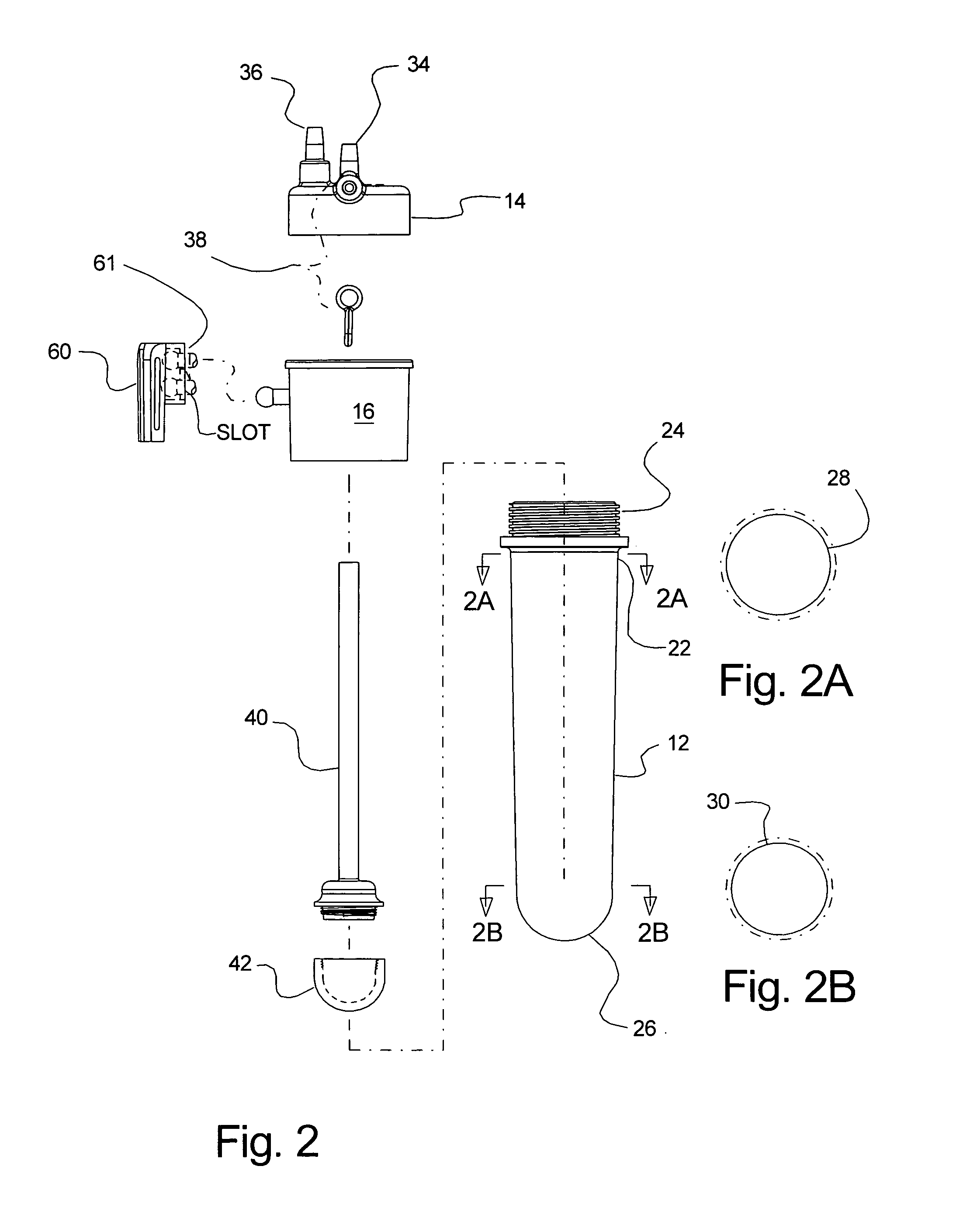Oxygen supply humidification system
a technology of oxygen supply and humidification system, which is applied in the direction of heating types, lighting and heating apparatus, and separation processes, etc., can solve the problems of affecting the efficiency of known devices, affecting the effectiveness of known devices, etc., to achieve the effect of maintaining the effectiveness of devices and being easy to carry by very frail patients
- Summary
- Abstract
- Description
- Claims
- Application Information
AI Technical Summary
Benefits of technology
Problems solved by technology
Method used
Image
Examples
Embodiment Construction
[0033]While the invention will be described and disclosed here in connection with certain preferred embodiments, the description is not intended to limit the invention to the specific embodiments shown and described here, but rather the invention is intended to cover all alternative embodiments and modifications that fall within the spirit and scope of the invention as defined by the claims included herein as well as any equivalents of the disclosed and claimed invention.
[0034]Turning now to FIG. 1 where a preferred example of a perspective view of an oxygen therapy humidification device 10 that includes inventive structure taught here is illustrated, it will be understood that a preferred example of the oxygen therapy humidification device 10 is designed such that it may be carried by a patient, but as will be discussed below it is also contemplated that it may be used in conjunction with stationary devices, such as fixed oxygen therapy systems that are found in hospitals, assisted...
PUM
| Property | Measurement | Unit |
|---|---|---|
| cross-sectional area | aaaaa | aaaaa |
| area | aaaaa | aaaaa |
| temperature | aaaaa | aaaaa |
Abstract
Description
Claims
Application Information
 Login to View More
Login to View More - R&D
- Intellectual Property
- Life Sciences
- Materials
- Tech Scout
- Unparalleled Data Quality
- Higher Quality Content
- 60% Fewer Hallucinations
Browse by: Latest US Patents, China's latest patents, Technical Efficacy Thesaurus, Application Domain, Technology Topic, Popular Technical Reports.
© 2025 PatSnap. All rights reserved.Legal|Privacy policy|Modern Slavery Act Transparency Statement|Sitemap|About US| Contact US: help@patsnap.com



